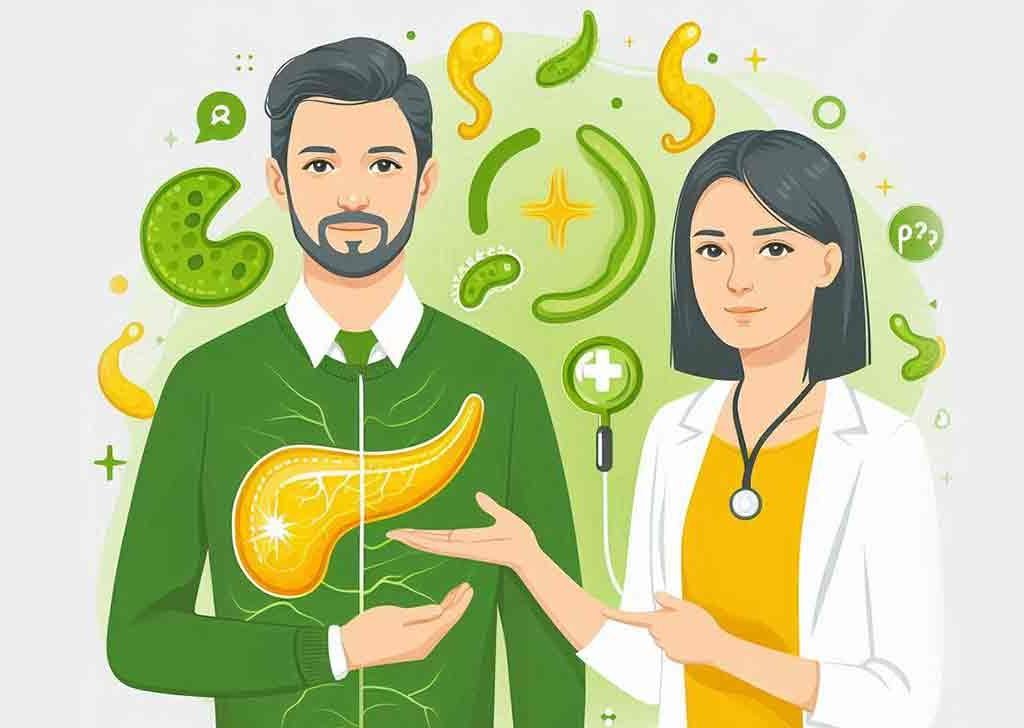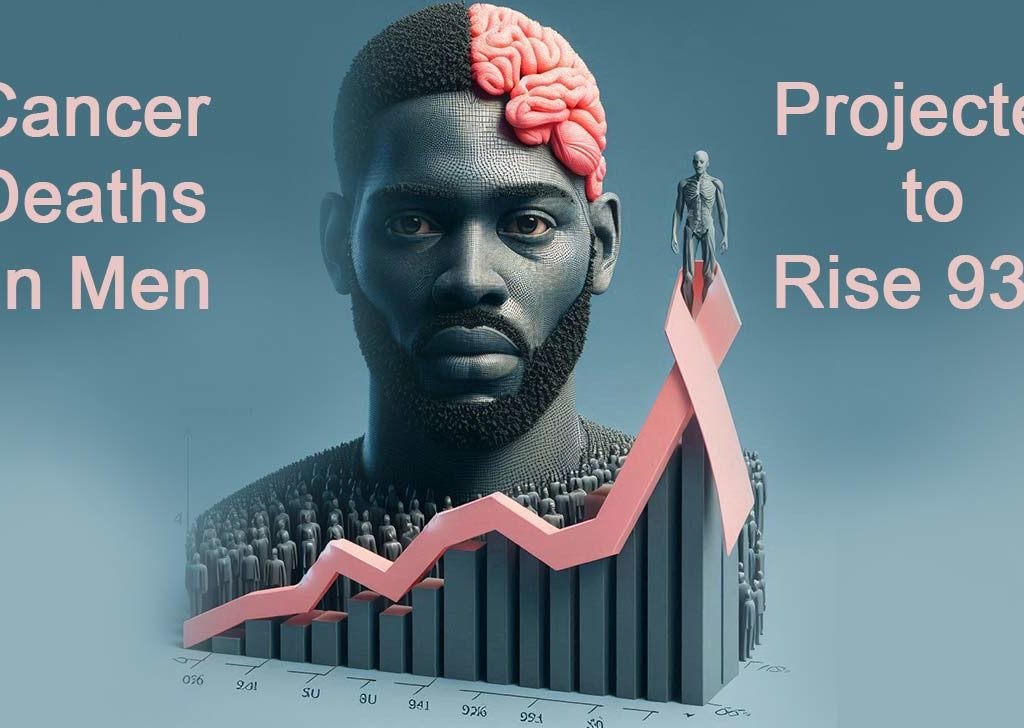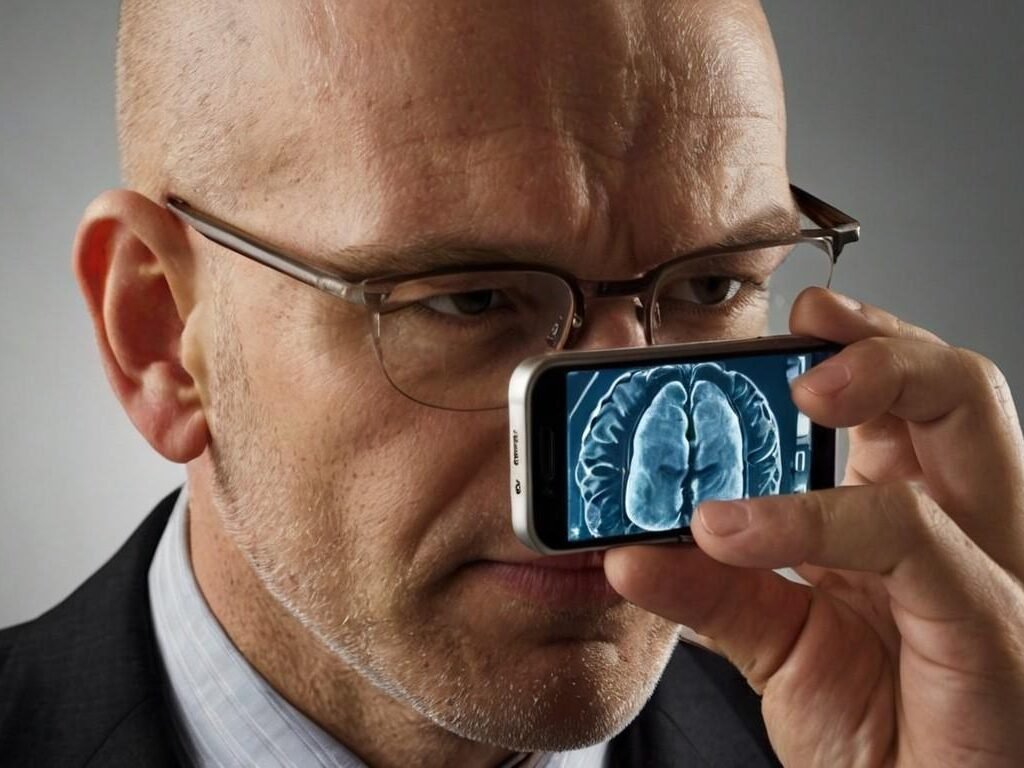Cancer: Types, Symptoms, Treatment, and Additional Information
Cancer is a group of diseases characterized by the uncontrolled growth and spread of abnormal cells. If not controlled, it can result in death. There are more than 100 types of cancer, and they can affect almost any part of the body. The type of cancer and how advanced it is determine its symptoms and treatment options.
Types of Cancer
1. Carcinomas
- The most common type of cancer, which begins in the skin or tissues that line internal organs (e.g., lung, breast, and colon cancer).
2. Sarcomas
- Cancers that arise in the bones, muscles, fat, or cartilage.
3. Leukemias
- Cancers of the blood or bone marrow, such as acute lymphocytic leukemia.
4. Lymphomas
- Cancers that begin in the cells of the immune system, such as Hodgkin and non-Hodgkin lymphoma.
5. Melanomas
- A type of cancer that originates in the melanocytes (cells that produce pigment in the skin).
Common Symptoms of Cancer
Symptoms vary depending on the type and location of the cancer. However, some general symptoms may include:
- Fatigue
- Unexplained weight loss
- Persistent pain
- Changes in skin (e.g., yellowing, darkening, or redness)
- Lumps or thickening in parts of the body
- Persistent cough or trouble breathing
- Changes in bowel or bladder habits
Specific symptoms vary with the type of cancer. For example:
- Breast cancer may cause a lump in the breast.
- Lung cancer may present with chronic coughing or coughing up blood.
- Colorectal cancer might cause changes in bowel habits, including blood in the stool.
Treatment Options for Cancer
Treatment depends on the type, stage, and location of the cancer, as well as the patient’s overall health.
1. Surgery
- The removal of cancerous tissue is often the first option for many solid tumors. This may be combined with other treatments to reduce the likelihood of cancer returning.
2. Radiation Therapy
- Uses high-energy radiation to kill cancer cells or shrink tumors. It can be delivered externally or internally (brachytherapy).
3. Chemotherapy
- Uses powerful drugs to kill rapidly dividing cancer cells throughout the body. This is often used when cancer has spread to other parts of the body.
4. Immunotherapy
- Boosts or modifies the body’s immune system to help it recognize and attack cancer cells more effectively. Checkpoint inhibitors and CAR T-cell therapy are examples of immunotherapy.
5. Targeted Therapy
- Uses drugs that target specific genes or proteins involved in cancer growth. This type of treatment tends to have fewer side effects than chemotherapy because it is more selective in killing cancer cells.
6. Hormone Therapy
- Some cancers, like breast and prostate cancer, are hormone-sensitive and can be treated by blocking hormones that fuel tumor growth.
7. Stem Cell Transplant (Bone Marrow Transplant)
- Replaces damaged or destroyed bone marrow with healthy stem cells. This treatment is often used for blood cancers like leukemia and lymphoma.
Additional Information
Risk Factors
- Lifestyle Choices: Smoking, excessive alcohol use, a poor diet, lack of exercise, and exposure to UV radiation increase the risk of various cancers.
- Genetics: Family history of cancer can significantly raise the risk for certain types, such as breast, ovarian, and colon cancer.
- Environmental Factors: Exposure to chemicals, radiation, and pollution can increase cancer risk.
Early Detection
- Screening Tests: Early detection can significantly improve the prognosis for many cancers. Regular screenings such as mammograms (breast cancer), colonoscopies (colorectal cancer), and Pap smears (cervical cancer) can detect cancers at an earlier, more treatable stage.
Prognosis
- The prognosis depends on the type of cancer, stage at diagnosis, and the individual’s overall health. Some cancers are curable if caught early, while others, particularly those detected at advanced stages, may be more challenging to treat effectively.
Coping with Cancer
- Emotional Support: A cancer diagnosis can be emotionally challenging. Support groups, therapy, and counseling are crucial resources for patients and families coping with cancer.
- Palliative Care: For advanced-stage cancers, palliative care focuses on managing symptoms and improving quality of life rather than curing the disease.
Conclusion
Cancer is a complex disease with many types, symptoms, and treatments. Early detection, lifestyle changes, and advances in medical treatments have improved outcomes for many cancer patients. Consulting a healthcare provider for regular screenings and maintaining a healthy lifestyle can reduce cancer risk and improve early detection, which can lead to better treatment outcomes.
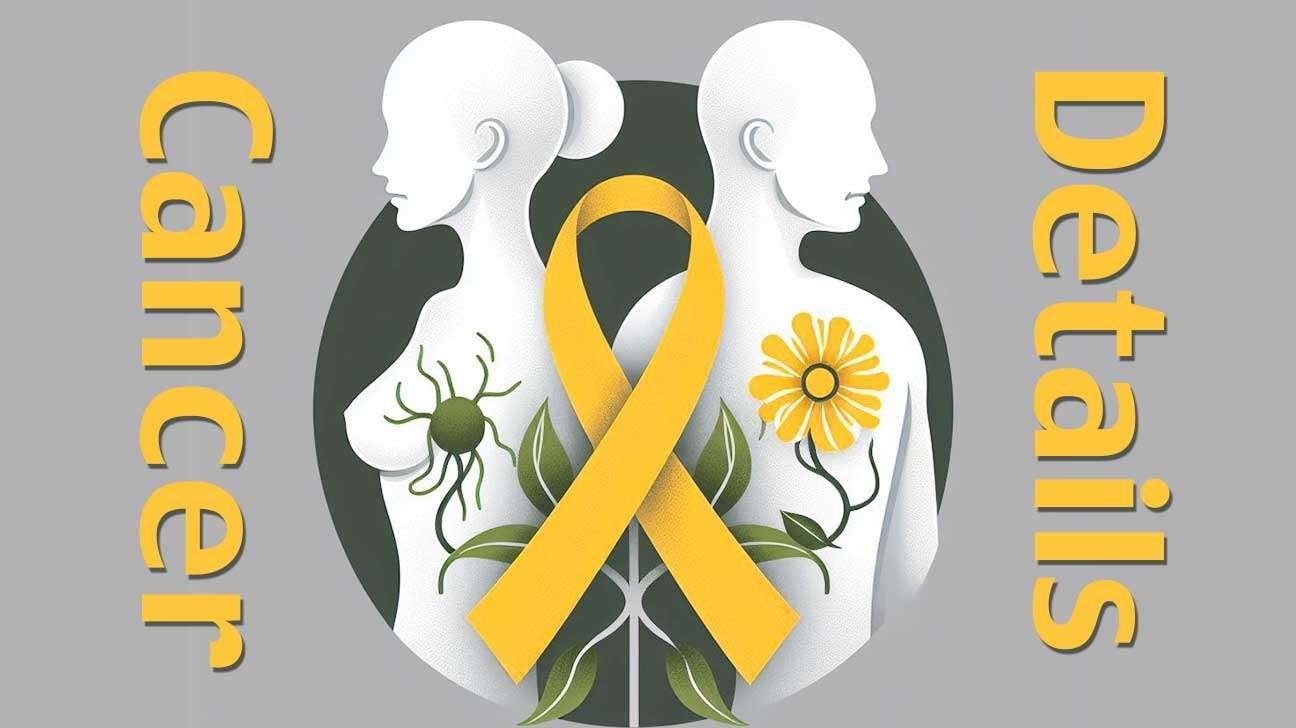
Definition of Cancer
Cancer is a group of diseases characterized by the uncontrolled growth and spread of abnormal cells. In a healthy body, cells grow, divide, and die in a regulated manner to maintain the normal functioning of tissues and organs.
Tumors can be either benign or malignant. Benign tumors are non-cancerous and do not spread to other parts of the body. Malignant tumors, on the other hand, are cancerous and can invade nearby tissues and organs or spread to other parts of the body through the bloodstream or lymphatic system, a process known as metastasis.
Cancer can occur in virtually any tissue or organ in the body, and there are many different types of cancer, each with its own characteristics and behaviors. Causes of cancer are multifactorial and can include genetic factors, environmental exposures (such as tobacco smoke, UV radiation, and certain chemicals), and lifestyle factors (such as diet and physical activity).
The diagnosis and treatment of cancer often involve a combination of approaches, including surgery, chemotherapy, radiation therapy, immunotherapy, and targeted therapies. Early detection and advances in medical research and technology have improved outcomes for many cancer patients, but the complexity and heterogeneity of cancer make it a challenging and ongoing area of study in medical science.
Cancer: Symptoms & causes
Cancer is a complex group of diseases, and the symptoms and causes can vary depending on the type of cancer and the specific organs or tissues involved. However, there are some general patterns of symptoms and common risk factors associated with the development of cancer. It’s important to note that not everyone with cancer will experience the same symptoms, and some individuals may not show any noticeable symptoms in the early stages. Here’s an overview:
Common Symptoms:
Fatigue:
Persistent, unexplained tiredness that doesn’t improve with rest.
Unexplained Weight Loss:
Significant and unintentional weight loss can be a symptom of various cancers.
Pain:
Persistent pain that is not related to an injury or easily explained.
Changes in the Skin:
Changes in the size, shape, or color of moles, or the appearance of new skin abnormalities.
Bowel or Bladder Habits Changes:
Persistent changes in bowel movements, such as diarrhea or constipation, or changes in bladder habits.
Persistent Cough or Hoarseness:
A cough or hoarseness that persists for an extended period, especially in the absence of a cold or other respiratory infection.
Difficulty Swallowing:
Trouble swallowing, which may indicate a problem in the throat or esophagus.
Lumps or Swellings:
Unexplained lumps or swelling in any part of the body.
Bleeding:
Unexplained bleeding, such as blood in the stool, urine, or coughing up blood.
Changes in Appetite:
Significant changes in appetite, either a loss of appetite or unexplained increased hunger.
Common Risk Factors and Causes:
Genetics:
Inherited genetic mutations can increase the risk of certain cancers.
Age:
The risk of cancer generally increases with age.
Environmental Factors:
Exposure to certain environmental factors, such as tobacco smoke, UV radiation, and certain chemicals.
Lifestyle Factors:
Unhealthy lifestyle choices, including poor diet, lack of physical activity, and excessive alcohol consumption.
Chronic Infections:
Certain chronic infections, such as hepatitis B and C, human papillomavirus (HPV), and Helicobacter pylori, can increase the risk of specific cancers.
Immunosuppression:
Weakened immune system, either due to medical conditions or medications.
Hormones:
Hormonal factors, such as hormone replacement therapy or exposure to high levels of hormones.
Previous Cancer Treatment:
Previous cancer treatments, such as radiation or chemotherapy.
It’s crucial to remember that many of these symptoms can also be caused by non-cancerous conditions, and having one or more of these symptoms does not necessarily mean a person has cancer. However, persistent or unusual symptoms should be evaluated by a healthcare professional for proper diagnosis and appropriate management. Early detection and treatment can significantly improve the outcomes for many types of cancer. Regular screenings and check-ups are also essential for individuals with specific risk factors or a family history of cancer.

Types of cancer
There are numerous types of cancer, each originating in different tissues or organs of the body. The classification of cancer is typically based on the specific cell type that becomes cancerous and the tissues or organs where the cancer develops. Here are some common types of cancer:
Breast Cancer:
Begins in the cells of the breast, most commonly in the ducts or lobules.
Lung Cancer:
Often associated with smoking, lung cancer develops in the lungs and is categorized into small cell lung cancer (SCLC) and non-small cell lung cancer (NSCLC).
Colorectal Cancer:
Affecting the colon or rectum, colorectal cancer includes cancers of the colon (colon cancer) and rectum (rectal cancer).
Prostate Cancer:
Occurs in the prostate gland in men and is one of the most common cancers in men.
Ovarian Cancer:
Affects the ovaries in women and is often diagnosed at an advanced stage due to subtle symptoms.
Pancreatic Cancer:
Develops in the pancreas and is often diagnosed at an advanced stage, leading to a lower survival rate.
Leukemia:
A group of cancers affecting the blood and bone marrow, characterized by the rapid production of abnormal white blood cells.
Lymphoma:
A cancer of the lymphatic system, including Hodgkin lymphoma and non-Hodgkin lymphoma, which involve the lymph nodes and other lymphoid tissues.
Bladder Cancer:
Originates in the bladder lining and can present with symptoms like blood in the urine.
Kidney Cancer:
Develops in the kidneys and is often asymptomatic in the early stages.
Liver Cancer:
Primarily hepatocellular carcinoma, often associated with chronic liver diseases or infections.
Skin Cancer:
Mainly includes melanoma, basal cell carcinoma, and squamous cell carcinoma, arising from skin cells.
Cervical Cancer:
Affects the cervix in women and is often linked to persistent human papillomavirus (HPV) infections.
Thyroid Cancer:
Develops in the thyroid gland, and the majority of cases have a good prognosis.
Brain and Central Nervous System (CNS) Cancers: Can include gliomas, meningiomas, and other tumors affecting the brain or spinal cord.
Esophageal Cancer:
Affects the esophagus and is often associated with risk factors like smoking and alcohol consumption.
Stomach (Gastric) Cancer:
Develops in the stomach lining and is more common in older adults.
Bone Cancer:
Can arise in the bones and is divided into primary bone cancer (originates in the bone) and secondary or metastatic bone cancer (spread from other parts of the body).
These are just a few examples, and there are many more specific types of cancer, each with its unique characteristics, risk factors, and treatment approaches. Advances in medical research and technology continue to improve our understanding of cancer, leading to better diagnostic methods and treatment options. Regular screenings and early detection play a crucial role in improving outcomes for individuals at risk or with a family history of cancer.
Importance of Early Detection
Early cancer detection is crucial for several reasons, and its importance cannot be overstated. Detecting cancer in its early stages offers significant benefits for both individuals and public health. Here are some key reasons why early cancer detection is important:
Improved Treatment Success:
Early detection often allows for more effective and less aggressive treatment options. The smaller the tumor and the earlier the cancer is diagnosed, the higher the chances of successful treatment.
Increased Survival Rates:
Many cancers, when detected early, have higher survival rates. Early-stage cancers are often localized, making it easier to treat and increasing the likelihood of a complete cure.
Less Invasive Treatment Options:
Early-stage cancers may be treated with less invasive procedures, such as surgery or targeted therapies, minimizing the impact on the patient’s overall health and quality of life.
Reduced Treatment Costs:
Early detection can lead to less extensive and costly treatment. Advanced-stage cancers often require more aggressive treatments, leading to higher healthcare expenses.
Preservation of Organ Function:
Early detection may allow for the preservation of organ function. For example, in cases of early-stage breast cancer, lumpectomy (removing only the tumor) may be an option, preserving more of the breast tissue.
Prevention of Metastasis:
Early detection helps prevent the spread of cancer to other parts of the body, a process known as metastasis. Containing the disease in its early stages reduces the complexity of treatment and improves outcomes.
Screening Programs and Public Health Impact:
Early detection is a cornerstone of cancer screening programs. Regular screenings for certain cancers, such as mammograms and colonoscopies, help identify cancers before symptoms appear, leading to earlier intervention and improved outcomes.
Quality of Life:
Early detection can positively impact the overall quality of life for individuals diagnosed with cancer. Early treatment may result in less severe side effects, shorter recovery times, and a better chance of returning to normal daily activities.
Family and Community Well-Being:
Early detection can have a positive ripple effect on families and communities. Detecting cancer early not only benefits the individual but also reduces the emotional and financial burdens on families and society.
Advancements in Research:
Early detection contributes to the understanding of cancer biology and helps researchers develop new and more effective treatments. Studying early-stage cancers provides valuable insights into the mechanisms of the disease.
Psychological and Emotional Support:
Knowing about cancer in its early stages allows individuals to seek support from healthcare professionals, family, and friends. Early intervention can also provide psychological and emotional support, helping individuals cope with the challenges of a cancer diagnosis.
In summary, early cancer detection is a critical component of comprehensive cancer control. Regular screenings, awareness campaigns, and advances in diagnostic technologies contribute to identifying cancer at its earliest and most treatable stages, ultimately saving lives and improving the well-being of individuals and communities.
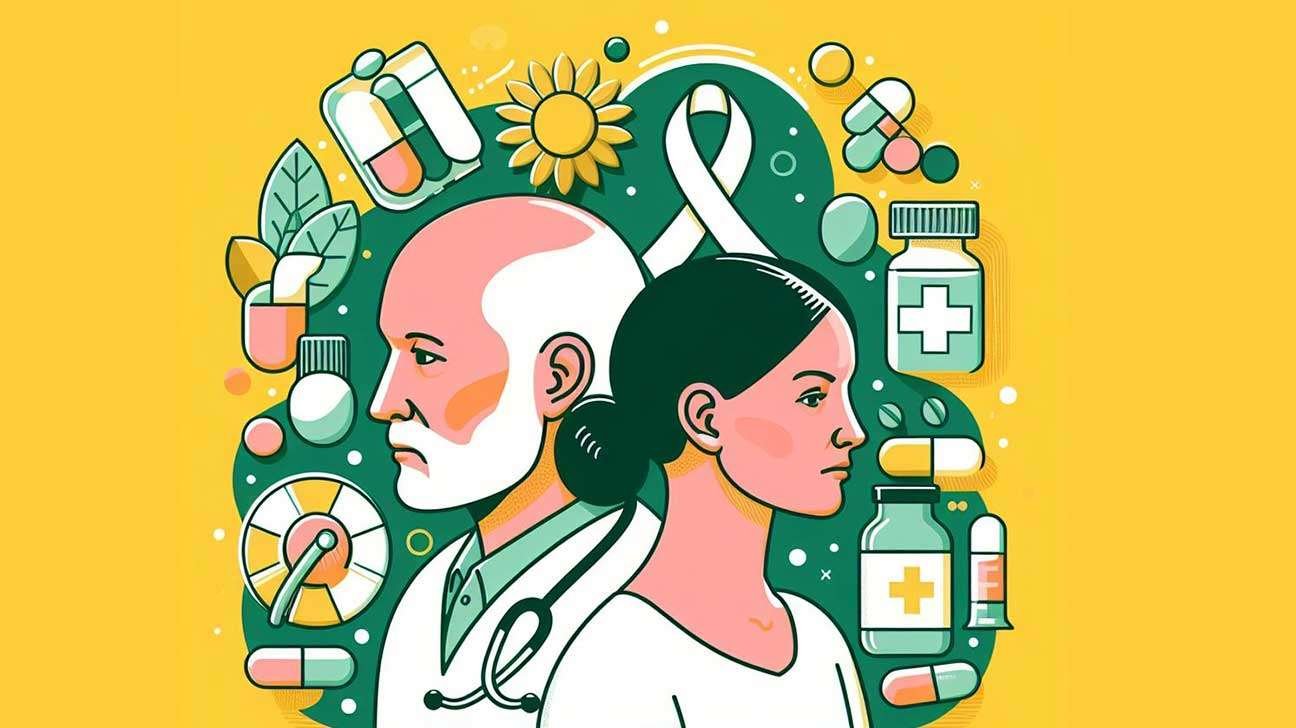
How fast can cancer spread?
The rate at which cancer spreads, or metastasizes, can vary widely and depends on several factors, including the type of cancer, its stage at diagnosis, and individual characteristics of the person affected. Here are some key points to consider:
Cancer Type:
Different types of cancer have varying growth rates and tendencies to spread. Some cancers are known for their relatively slow progression, while others can be more aggressive and spread rapidly.
Tumor Biology:
The biological characteristics of the tumor, such as its aggressiveness and ability to invade surrounding tissues, influence the speed of metastasis. Tumors with a high rate of cell division and genetic instability may spread more quickly.
Stage at Diagnosis:
The stage at which cancer is diagnosed is a critical factor. In general, cancers detected at an early stage, when the tumor is localized and has not spread beyond its site of origin, have a better prognosis and are less likely to have metastasized.
Grade of the Tumor:
The tumor grade reflects the degree of abnormality of the cancer cells and their resemblance to normal cells. Higher-grade tumors often grow and spread more quickly than lower-grade tumors.
Presence of Blood Vessels and Lymphatics:
The presence of blood vessels and lymphatic channels within or near the tumor can facilitate the spread of cancer cells. Tumors with a rich blood supply may have an increased potential for metastasis.
Immune System Response:
The body’s immune system plays a role in controlling the spread of cancer cells. Tumors that can evade or suppress the immune response may have a higher likelihood of metastasizing.
Treatment Response:
The effectiveness of cancer treatment, including surgery, chemotherapy, radiation, and immunotherapy, can impact the rate of cancer spread. Successful treatment may slow or halt the progression of the disease.
Individual Variability:
Each person’s response to cancer is unique, and factors such as overall health, genetics, and lifestyle can influence the speed at which cancer spreads.
It’s important to note that while some cancers can spread quickly, others may remain localized for an extended period, and some may never metastasize. Early detection through regular screenings and prompt medical intervention can significantly impact the course of the disease and improve outcomes by catching cancer at a more treatable stage.
If you have concerns about cancer or notice any unusual symptoms, it is crucial to seek prompt medical attention. A healthcare professional can evaluate your specific situation, perform necessary tests, and provide appropriate guidance and treatment options.
Treatment
Cancer treatment involves a combination of approaches, and the specific treatment plan depends on the type and stage of cancer, as well as individual patient factors. Here are some common methods used in cancer treatment:
Surgery:
Surgical procedures involve removing the tumor or a part of the affected organ. Surgery is often used for localized tumors and aims to eliminate or reduce the cancerous cells.
Chemotherapy:
Chemotherapy uses drugs to kill or slow down the growth of cancer cells. These drugs can be administered orally or through intravenous infusion. Chemotherapy is systemic, meaning it affects the entire body and targets rapidly dividing cells.
Radiation Therapy:
This treatment uses high doses of radiation to target and destroy cancer cells. It can be delivered externally (external beam radiation) or internally (brachytherapy) depending on the type and location of the cancer.
Immunotherapy:
Immunotherapy stimulates the body’s immune system to recognize and attack cancer cells. This can be done through the use of checkpoint inhibitors, monoclonal antibodies, and other immune system boosters.
Targeted Therapy:
Targeted therapies are drugs that specifically target cancer cells while minimizing damage to normal cells. They work by interfering with specific molecules involved in the growth, progression, and spread of cancer.
Hormone Therapy:
Hormone therapy is used for cancers that are hormone-dependent, such as certain types of breast and prostate cancer. It aims to block or interfere with hormones that promote cancer growth.
Stem Cell Transplantation:
Stem cell transplantation involves replacing damaged or diseased bone marrow with healthy stem cells. This procedure is often used after high-dose chemotherapy or radiation to restore blood-forming stem cells.
Precision Medicine:
This approach involves using genetic and molecular information to tailor treatment to an individual’s specific cancer characteristics. It helps identify targeted therapies that may be more effective for certain patients.
Palliative Care:
Palliative care focuses on relieving symptoms and improving the quality of life for individuals with cancer, regardless of the stage of the disease. It is not limited to end-of-life care and can be integrated at any point during treatment.
Treatment plans are often personalized and may involve a combination of these approaches. The choice of treatment depends on factors like the type of cancer, its stage, the overall health of the patient, and their preferences. It’s crucial for patients to discuss their options with their healthcare team to make informed decisions about their care.

